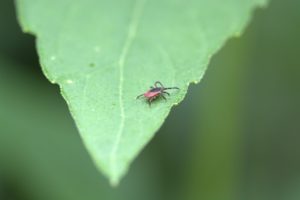There’s no doubt about it, ticks are creepy. Like, really really creepy. Our unseasonably warm weather for February makes it likely that tick season will be here sooner than later and has the potential to be very aggressive. *Shudders*
I do have good news for all you hikers, gardeners and nature loving folks at large; North Carolina incidence of Lyme disease is actually quite low. In 2015, according to the CDC, 95% of all Lyme disease cases were reported in 14 states and North Carolina was not on that list. In fact, within the 5 year period of 2009 to 2013 there were only 134 confirmed cases of Lyme disease in NC. This is significantly low when compared to other high risk states.
Alas, they are still super creepy and risk of infection should never be taken lightly. So I have some great expert tips on how to deter ticks, prevent those little buggers from latching on as well as what do in the event you have found a tick already latched. Prevention and a proactive approach to managing ticks are essential.
- The most important thing anyone can do is a thorough self-check immediately after spending time in the outdoors in suspected tick areas as well as before bed. This beats everything else hands down. It’s key to remember that if you find a tick on you that your chances of infection are about zero but only if YOU REMOVE THE TICK WITHIN 24 HOURS OF THE BITE. Common area that ticks love is in your hair going for your scalp, behind ears, in the crevices of your knees, armpits and thighs. Be thorough!
- The easiest and safest way to remove a tick is with a pair of good tweezers. Using really pointy tweezers, it’s possible to grab even the poppy-seed sized nymphs right down next to the skin. The next step is to simply pull the tick out like a splinter. Just make sure you grab the tick by its head firmly. Do not twist. Pull straight out.
- Cover up: Ticks want to latch onto your skin, so the best defense is an armor of clothing. Wear long sleeves and pants, even if it’s hot out; better, wear light-colored clothing on which it’s easier to spot dark-colored ticks. And don’t wear clothes with holes or mesh; young ticks (known as nymphs) are around the size of a poppy seed and can easily squeeze through.
- Seal any seams that might be open, like tucking your pants into your socks. This makes it harder for them to get under your clothes.
- Apply bug spray: If you choose to use insect repellant, there are many options available to you—from lightweight botanicals like citronella, geranium, cedar and various mints which mask your scent, to heavy-duty insecticides that kill ticks and other insects on contact. Many available for use like IR3535 and DEET can be used on the skin, while others like pyrethrin can only be sprayed on clothing and gear. Although these stronger varieties are not always the healthiest options, it’s still an option to consider.






